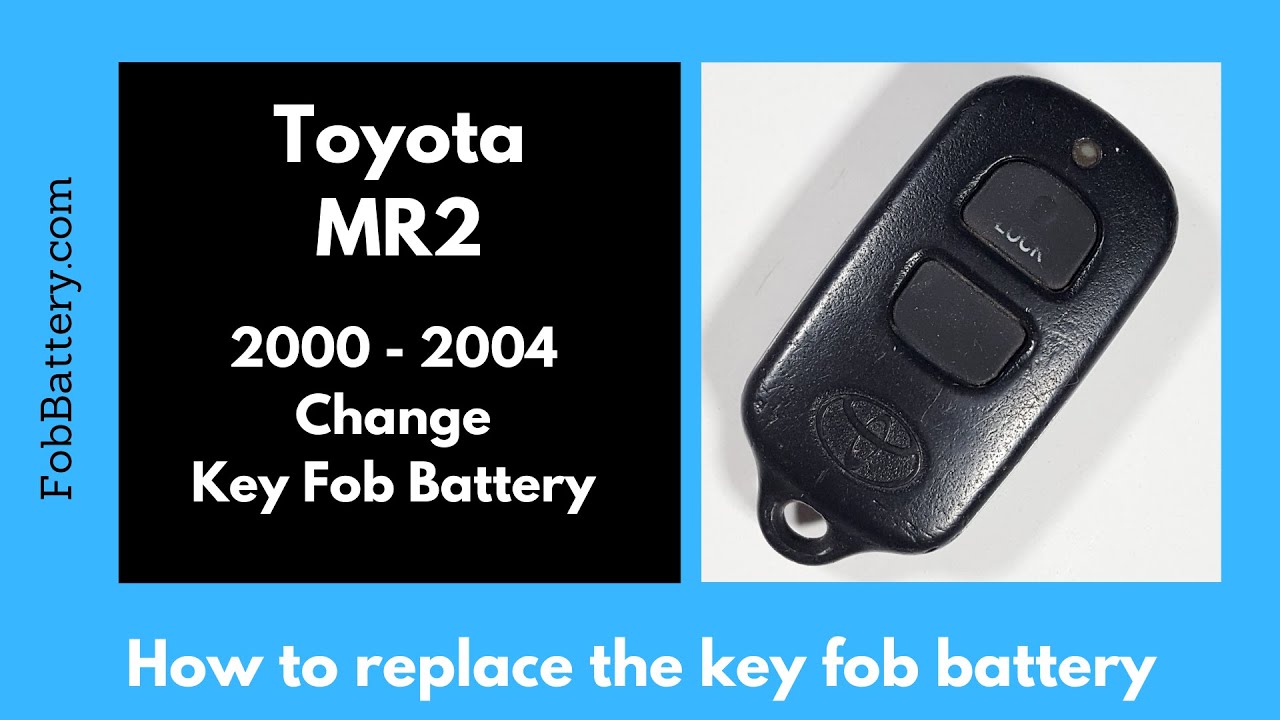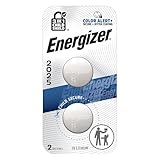Introduction
Replacing the battery in your Toyota MR2 key fob is a simple task that you can easily do at home. In this guide, I’ll walk you through the steps to change the internal battery. This procedure is applicable for Toyota MR2 models from 2000 to 2004.
- 3V LITHIUM COIN BATTERIES: One 2 pack of Energizer 2025 Batteries
- 3-IN-1 CHILD SHIELD: Featuring the world’s first 3-in-1 Child Shield with three lines of defense: Color Alert, a bitter coating, and child-resistant packaging
- COLOR ALERT: Color Alert technology dyes the mouth blue seconds after contact with saliva to indicate possible ingestion
Tools and Materials Needed
Before you start, you’ll need a few basic tools and materials. Here’s what you’ll need:
- Flathead screwdriver
- CR2025 battery
- Precision screwdriver or similar tool
- Optional: Paper clip, toothpick, or bobby pin
If you don’t have a CR2025 battery, you can easily purchase one online. I’ve included a link to buy the battery on Amazon for convenience.
Step-by-Step Instructions
Follow these steps to replace the battery in your Toyota MR2 key fob:
Step 1: Open the Key Fob
First, locate the small slot or indentation along the seam of the key fob. Insert your flathead screwdriver into this slot and twist it gently to crack the key fob open. Set the back cover aside.
Step 2: Remove the Old Battery
Once the key fob is open, you’ll see the old battery. You may need a smaller tool to remove it. While a flathead screwdriver can work, it might be too large and could cause some damage. Instead, use a precision screwdriver or a similar tool like a paper clip, toothpick, or bobby pin.
Insert the tool into the small hole next to the battery and pry it out carefully. The battery should come out easily once you have the right tool.
Step 3: Insert the New Battery
Take your new CR2025 battery and ensure the positive side (marked with a plus sign and text) is facing up. Click the new battery into place.
Step 4: Reassemble the Key Fob
After inserting the new battery, click the two halves of the key fob back together. Ensure everything is securely in place.
Step 5: Test the Key Fob
Finally, test the key fob to ensure it works correctly. Press the buttons and check if the light comes on. If it does, you’ve successfully replaced the battery.
- 3V LITHIUM COIN BATTERIES: One 2 pack of Energizer 2025 Batteries
- 3-IN-1 CHILD SHIELD: Featuring the world’s first 3-in-1 Child Shield with three lines of defense: Color Alert, a bitter coating, and child-resistant packaging
- COLOR ALERT: Color Alert technology dyes the mouth blue seconds after contact with saliva to indicate possible ingestion
Additional Tips
Here are some additional tips to make the process even easier:
- Use a smaller tool to avoid damaging the key fob.
- Purchase a precision screwdriver set for various sizes.
- Keep a few spare CR2025 batteries on hand for future replacements.
Common Questions
Below are some frequently asked questions about replacing the battery in a Toyota MR2 key fob:
What type of battery does the Toyota MR2 key fob use?
The Toyota MR2 key fob uses a CR2025 coin battery.
Where can I buy a CR2025 battery?
You can purchase a CR2025 battery at most electronics stores or online.
- 3V LITHIUM COIN BATTERIES: One 2 pack of Energizer 2025 Batteries
- 3-IN-1 CHILD SHIELD: Featuring the world’s first 3-in-1 Child Shield with three lines of defense: Color Alert, a bitter coating, and child-resistant packaging
- COLOR ALERT: Color Alert technology dyes the mouth blue seconds after contact with saliva to indicate possible ingestion
Do I need any special tools?
A regular flathead screwdriver and a precision screwdriver or similar tool are sufficient. You can also use a paper clip, toothpick, or bobby pin if needed.
How often should I replace the key fob battery?
Typically, the battery should last several years. Replace it when you notice reduced range or if the key fob stops working.
Can I damage the key fob by replacing the battery?
If you’re careful and use the right tools, you shouldn’t damage the key fob. Avoid using tools that are too large or applying excessive force.
Conclusion
Replacing the battery in your Toyota MR2 key fob is a straightforward process that can save you time and money. By following these steps, you can ensure your key fob continues to function correctly. If you found this guide helpful, feel free to leave a comment. For more tutorials on key fob battery replacements, visit our website or check out our other videos on YouTube.
Resources
For more information and to purchase the necessary battery, visit the following links:
Thank you for reading, and happy DIY!


